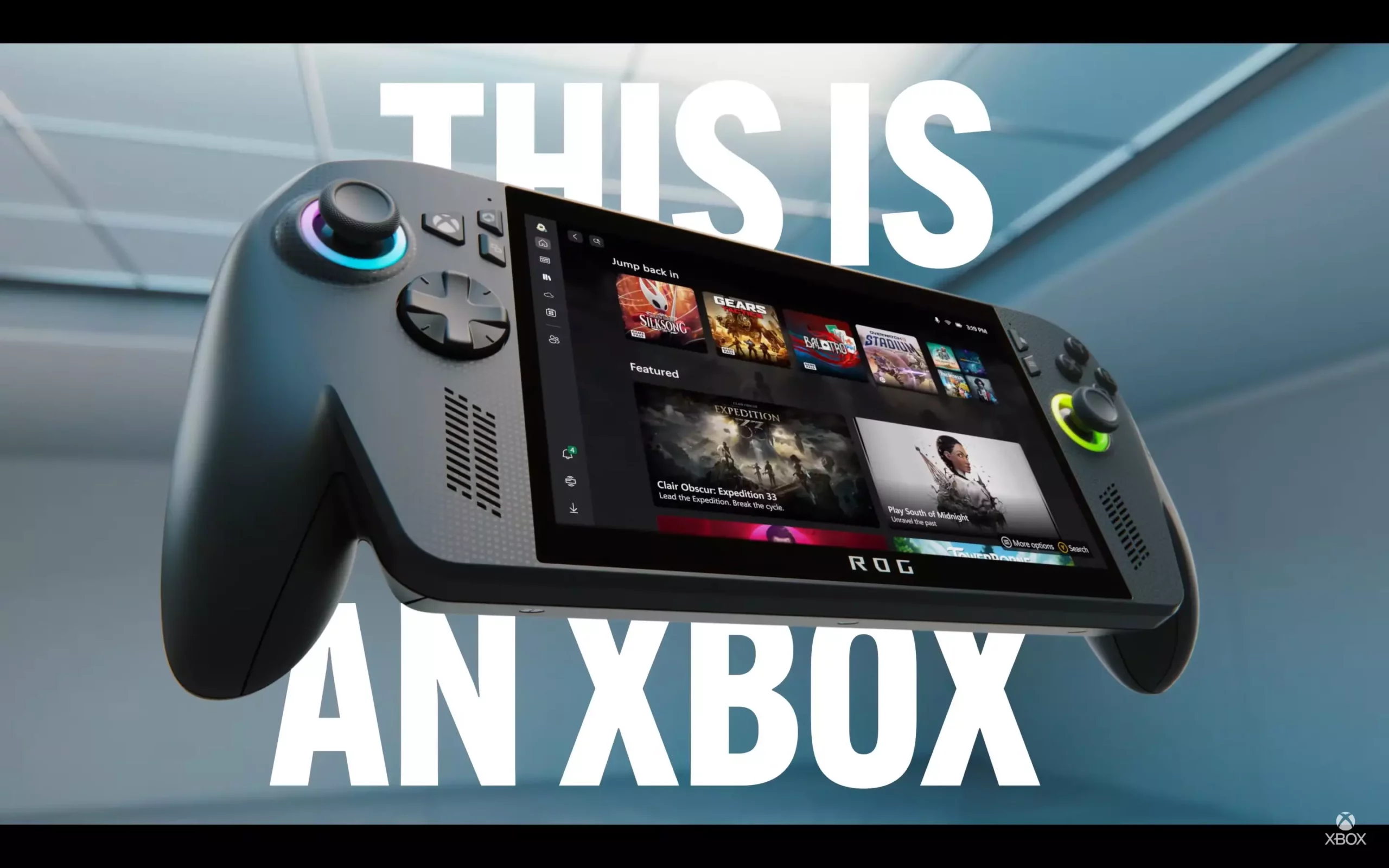In a gaming landscape increasingly defined by versatility and portability, Microsoft’s recent collaboration with Asus to introduce handheld gaming devices, the ROG Xbox Ally and ROG Xbox Ally X, signals a noteworthy shift in the company’s strategy. Labeling the devices as “an Xbox you can hold in your hands” is not just clever marketing; it encapsulates the essence of a modern gaming experience that goes beyond traditional consoles. However, the ambition behind this initiative is meet with complexities that reveal the mixed efficacy of this approach.
The ROG Xbox Ally X is poised to sit at the pinnacle of handheld performance, sporting the formidable Z2 Extreme chip. With 16 RDNA 3.5 GPU cores and 8 Zen 5 CPU cores, expectations for this device are sky-high — and justifiably so. This powerhouse promises not only performance that could compete with mainstream console offerings but also provides gamers with an experience that echoes the capabilities of high-end gaming PCs. Meanwhile, the ROG Xbox Ally, while a more budget-friendly option with lesser specs, must deliver a compelling experience at a significantly lower price point.
PC Architecture in Handheld Form
What’s particularly intriguing about these portable consoles is their underlying architecture. Both devices run on Windows 11 and tap into the vast ecosystem of PC gaming. The notion of having “an Xbox in your pocket” may seem appealing, but it raises questions about identity. If the ROG Xbox Ally X is essentially a Windows gaming PC, albeit designed with Xbox branding, where does the Xbox distinction truly lie? Does slapping an Xbox logo on a portable PC equate to an authentic gaming console experience?
For many hardcore gamers, this begs additional questions: can we really endorse a product that lacks a fully realized gaming OS or unique features beyond standard Windows? While there are undeniable benefits—access to a plethora of games from various storefronts, for example—consumers expecting a seamless Xbox experience may find themselves wrestling with the intricacies of Windows, especially on a handheld device. The potential for an uneven gaming experience looms large here, given that handheld interfaces can often be far less intuitive than their console counterparts.
The Market Landscape: Competition and Pricing
Adding a bit of buzz to the mix, the handheld gaming space is heating up with innovations like the Steam Deck and Valve’s SteamOS. While many believe the ROG Xbox Ally can carve out a niche for itself, especially for fans of Windows gaming, it must tread carefully on the pricing front. Speculation around pricing suggests that the more affordable ROG Xbox Ally must undercut its competitors, which includes the Steam Deck, to attract shoppers wary of spending money on a half-baked solution.
The looming deadline of “holiday 2025” for the launch adds an element of urgency not only to Microsoft but also to competitors who may spit out rapid innovations in that timeframe. A lukewarm or inflated price could dissuade potential buyers, especially given that gamers are beginning to expect more from handheld devices both in terms of performance and user experience.
Future Prospects: The Xbox Ecosystem and Beyond
As the gaming community eagerly awaits the further unveiling of the ROG Xbox Ally series, several insightful angles warrant exploration. Microsoft’s apparent pivot away from developing a dedicated handheld console indicates a shift towards a more software-centric approach for gaming. Rather than building hardware that stands alone, the company is choosing to integrate its services and software into existing technologies, thereby expanding the Xbox ecosystem.
While this approach makes sense strategically, especially in an age where smartphones and tablets dominate the consumer market, it leaves open the question of whether Microsoft fully understands what gamers desire from a handheld platform. Is the goal merely to cater to an existing customer base, or does the company aim to innovate and redefine handheld gaming? Until more details are released regarding the operational efficiencies and software enhancements of the ROG Xbox Ally, enthusiasts are left feeling intriguingly optimistic yet cautiously skeptical.
The real test will come with user experience; Microsoft can only incorporate Xbox branding and UI for so long. Gamers seek substance beyond branding, especially in an era rich with competitive offerings. The ROG Xbox Ally series must strive not just to meet expectations, but to transcend them—at which point, gamers might finally see a genuine handheld experience take root.

